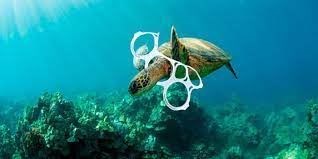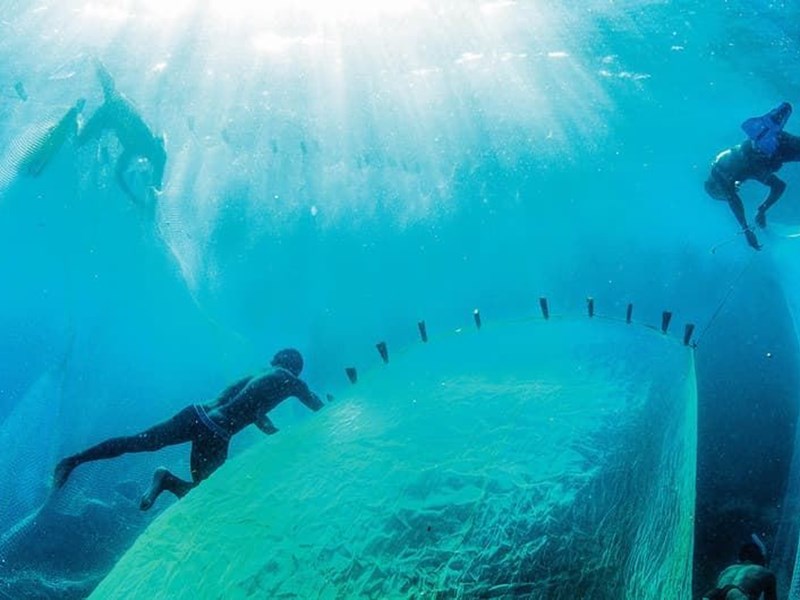
At Glu Glu Pet we join the WWF campaign for clean oceans of plastics.
We care about the Environment, the oceans and any habitat where any animal species lives, we care that they are cared for and free of any contamination.
Every year 100 million tons of plastic waste is dumped into nature and a tenth ends up in the oceans, causing impacts that range from the depths of the sea to our plates.
Plastic is drowning the planet and is one of the main threats to health, the environment and the world's economies.
An important part of these plastic spills that are killing thousands of marine species are "ghost nets", abandoned, lost or discarded nets and fishing gear that account for 10% of the total waste and spills into the sea.
It is estimated that between 500,000 and 1 million tons of nets and fishing gear are abandoned in the ocean each year and become death traps for mammals, turtles and seabirds that die entangled or suffocated in these traps.
Entanglement in these meshes can lead to hunger, difficulty breathing and moving, or even a slow and painful death.
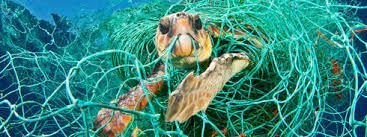
NO MORE GHOST NETWORKS. FOR A #NatureSINPLASTICS
It is estimated that about 6% of all fishing nets, almost 9% of traps and pots, and 29% of all fishing lines used in the world are abandoned, lost or disposed of in the environment .
In the North Pacific, nets, ropes and ropes from fishing and shipping account for 46% of the 79,000 tonnes of plastic floating in this area and making up the Great Pacific Garbage Patch.
The new report launched by WWF "Stop ghost nets, the deadliest form of marine plastic", also points out that more than 90% of the species captured by ghost nets have commercial value.
At WWF they have declared war on plastic in nature.
If we do not change the rate of production and consumption of plastic, in the year 2050 there will be more plastic than fish in our seas. They work to regulate the use and disposal of these nets, improve their traceability and to encourage the use of biodegradable materials in fishing gear and thus protect some of our planet's treasures: whales, turtles, penguins, dolphins, seals and sharks.
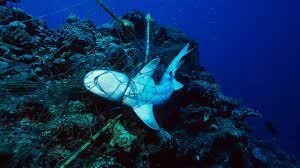
THE UN FIGHTS TO KEEP THE OCEANS CLEAN OF PLASTICS:
Goal 14: Conserve and sustainably use the oceans, seas and marine resources.

- Oceans cover three-quarters of the Earth's surface, contain 97 percent of the planet's water, and account for 99 percent of the planet's habitable surface by volume.
- More than three billion people depend on marine and coastal biodiversity for their livelihoods.
- Globally, the market value of marine and coastal resources and their industry is estimated at $3 trillion per year or about 5 percent of global GDP.
- The oceans contain almost 200,000 identified species, but the real numbers may be in the millions.
- The oceans absorb about 30 percent of the carbon dioxide produced by humans, buffering the impacts of global warming.
- The oceans serve as the world's largest source of protein. More than 3 billion people depend on the oceans as their main source of protein.
- Marine fishing directly or indirectly employs more than 200 million people.
- Fisheries subsidies are contributing to the rapid depletion of many species and impeding efforts to save and restore the world's fisheries and associated jobs, causing ocean fisheries to generate US$50 billion less per year than they could. .
- Open ocean tracts show that current acidity levels have increased by 26 percent since the start of the Industrial Revolution.
- Coastal waters are deteriorating due to pollution and eutrophication. Without coordinated efforts, coastal eutrophication is expected to increase in 20 percent of large marine ecosystems by 2050.
The ocean drives the global systems that make the Earth a habitable place for humans. Our rain, drinking water, weather, climate, coastlines, much of our food and even the oxygen in the air we breathe are provided and regulated by the sea.
Careful management of this essential global resource is a key feature of a sustainable future. However, at present, there is a continuous deterioration of coastal waters due to pollution and ocean acidification that is having an adverse effect on the functioning of ecosystems and biodiversity. Likewise, it is also having a detrimental impact on small-scale fisheries.
Protecting our oceans must remain a priority. Marine biodiversity is vital for the health of people and our planet. Marine Protected Areas must be managed effectively, as well as their resources, and regulations must be put in place to reduce overfishing, marine pollution and ocean acidification.
By 2050 there will be more plastic than fish in the oceans unless people stop using single-use items made from it, like bags and bottles.
According to the UN Environment Program (UNEP), plastic pollution is present everywhere, from the beaches of Indonesia to the bottom of the ocean at the North Pole, and is moving up the food chain to our tables. .
In 1950, with a population of 2.5 billion, the world produced 1.5 million tons of plastic; last year, with a population of more than 7 billion, 300 million tons were produced, with serious consequences for marine plants and animals.
"According to some estimates, 99% of all seabirds will have ingested some form of plastic by the middle of the century," said Petter Malvik, UNEP Communications Officer.
Earlier this year, the UN declared war on ocean plastic, launching the #CleanSeas campaign, during the World Ocean Summit in Bali organized by The Economist.
The initiative urges governments to approve policies to reduce plastics, urges industries to reduce packaging that uses this material and redesign products, and calls on people to change their habits.
During the meeting, Indonesia pledged to eliminate its marine litter by 70 percent by 2025; Uruguay announced that it will impose taxes on single-use plastic bags and Kenya agreed to eliminate them completely.
Click on the image to enlarge it. Infographic: UN Environment
"The #CleanSeas campaign has already achieved significant victories for the oceans, but the work is far from done. By 2022, we aim to achieve a global ban on microbeads in personal care and cosmetics and a drastic reduction in production and use of single-use plastic," Malvik said.
Microbeads are small pieces of plastic used, among other things, in exfoliating products and toothpaste. They are described in the ingredients as polyethylene or polypropylene.
Given the amount of plastic present in the oceans today, much of the marine life ingests it directly or through feeding on smaller sea creatures.
FAO Fisheries Industry Officer Petri Suuronen told UN News that these microplastics often carry toxic contaminants and pose a real risk to food safety and human health if they enter the food chain through the fish we eat. .
With a planetary population estimated at 9.7 billion people in 2050, the threat from fish stocks contaminated with microplastics and their associated toxins would be very great," he added.
In addition to the dangers to humans, microplastics threaten fish and birds that mistake them for food and starve to death.
Microplastics are generated in two ways. Either they are manufactured, not just as microbeads, but also as microfibers that come off our clothes in the wash, or are created when waves and sunlight break down larger pieces of plastic.
One source of microplastics is abandoned, lost, or discarded fishing gear.
In 2009, the FAO estimated that there are some 640,000 tons of abandoned nets on the seabed worldwide. Much of these nets continue to trap marine animals in what has been called "ghost fishing".
Apart from its harmful effects, discarded plastic has economic drawbacks.
Plastic packaging materials worth no less than $80 billion are lost each year, according to a report by the World Economic Forum and the Ellen MacArthur Foundation, cited by the UN.
Click on the image to enlarge it. Infographic: UN Environment
The report also notes that if this trend continues, by 2050 the oceans will contain more plastic than fish by weight.
Solving the problem of plastic pollution will require international agreements.
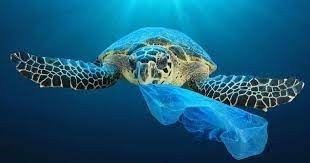
GLU GLU PET ALSO SUPPORTS GREENPEACE'S CAMPAIGN TO SAVE THE OCEANS FROM PLASTIC:
Because plastic is so persistent and easily dispersed, we can find plastics in every corner of the planet, from the Arctic to Antarctica. Once plastic objects reach the sea, they can be ingested by marine fauna and accumulate inside them, they can remain in suspension or floating on the surface, they can finally sink and remain on the seabed, or they can even get trapped in the ice. of the Arctic. Plastics have already been found even in the deepest areas, more than 10,000 meters deep.
The plastics that we find on the surface are only the tip of the iceberg, since they represent less than 15% of all the plastics in the sea. Currently, five concentration zones known as plastic “soups” have been identified: one in the Indian Ocean, two in the Atlantic (North and South) and two in the Pacific (North and South).
These surface areas have a high concentration of microplastics.
High concentrations of plastics can also be found on coasts and coastlines, especially in regions with high coastal populations, inadequate waste management systems, intensive fisheries, or high tourism.
In the Mediterranean we also find a large amount of microplastics, similar to those in plastic "soups".
In fact, between 21% and 54% of all microplastic particles in the world are found in the Mediterranean basin. During the investigations that Greenpeace carried out in 2015, an average of 320 garbage objects were collected for every 100 meters of beach sampled in Spain, with 75% of this waste being plastic objects.
Every day 30 million cans and plastic bottles continue to be abandoned in Spain, which go on to contaminate our land, coastal and marine environment.
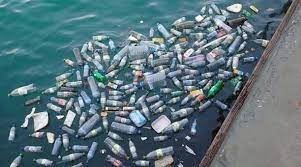
WHAT HAPPENS TO PLASTIC WHEN IT REACHES THE SEAS AND OCEANS?
Once plastic objects reach the marine environment, they take between decades and hundreds of years to degrade.
The degradation time depends on the type of plastic and the environmental conditions to which it is exposed (sunlight, oxygen, mechanical agents).
In the case of the oceans, UV radiation from sunlight is the main agent that degrades plastic.
Wave action accelerates this process and as a result the larger fragments break into smaller pieces, generating microplastics.
It is difficult to estimate the time it takes for plastic to biodegrade in the oceans, but it is considered to be much slower than on land.
Once the plastic is buried, passes into the water column or is covered by organic or inorganic matter (which is very common in the marine environment) it is less exposed to sunlight, and temperatures and oxygen decrease, which delaying its degradation.
During all this time until they degrade, all plastic objects that reach the sea can cause serious damage to marine fauna. Currently, some 700 species of marine organisms are affected by this type of pollution.
Every year, more than a million birds and more than 100,000 marine mammals die as a result of all the plastics that reach the sea.
